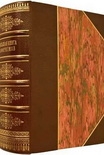Living Like Ed Ed Jr. (best ereader for pdf and epub txt) 📖

- Author: Ed Jr.
Book online «Living Like Ed Ed Jr. (best ereader for pdf and epub txt) 📖». Author Ed Jr.
When you consider the low-hanging fruit, the most energy saved is by collecting and recycling aluminum. If you go back to the top of the pyramid—the amount of aluminum recycled vs. mined in Jamaica—it’s still a beneficial trade-off.
Critics also argue—and they are correct—that there have been highly inefficient recycling programs that do not make a positive environmental contribution. They are operating at a net loss, an environmental deficit, by generating diesel fumes.
There’s another challenge to making these programs environmentally viable: our urban miners. For years we in the recycling realm have praised those—our homeless and others who clearly are not homeless—who go around picking the gold (in this case aluminum) out of the recycling bins. When the recycling that’s picked up by the town or city has already been cherry-picked of most of the valuable materials, the city can’t get its redemption value—that is, the deposits you and I have paid on aluminum cans and glass bottles and other containers. The municipalities running these recycling programs count on that money. And suddenly, they’re picking up mostly corrugated cardboard, and there’s not as much money coming into the coffers to support the program. There’s no money to be made in a curb-side program from chipped cardboard (especially if it’s contaminated with other waste), different papers, and glass containers. Deciding to reclaim these materials is a judgment call at best, because you’re basically hauling around sand. That’s all glass is made of. There may be a deposit on it, but sand is heavy, and it may not be as economically viable to recover as those aluminum cans.
For example, the city of Napa, California, estimates that urban miners—they call them thieves—“ steal” as much as half a million dollars’ worth of cans and deposit bottles a year. So they urge residents and business owners to call a nonemergency hotline if they spot people going through their recycling bins. In Los Angeles County, you’re supposed to call the sheriff’s department, so these scavengers can be fined or even serve jail time.
Though I would not condone fines or jail terms for homeless folks trying to make a buck, I would suggest finding ways to make every recycling program more efficient and more cost effective.
SORTING YOUR TRASH
Whether or not your city has a curbside recycling program, you’re still going to need to sort your trash. Even cities that don’t have a curbside program usually have neighborhood drop-off locations where you can bring your recyclables. If you live in an apartment or a condo that doesn’t have recycling bins, you can do the same. No matter how your trash gets to the recycling facility, the first step is always the same: sorting.
In many cities, it’s been made pretty easy. The Department of Sanitation issues different-colored bins. In Los Angeles we have three:
• Black is for stuff that goes to the landfill.
• Green is for yard waste.
• Blue is for recycling.
We’re lucky in that we can put most of our recyclable stuff in one bin, including several different kinds of plastic, aluminum cans, glass, even mixed paper. That’s a lot of stuff. My blue bin is always topped off with recyclable materials.
In Brooklyn, New York, on the other hand, paper for recycling gets its own separate bin and pickup, while mixed glass, metal, and plastic go in another, and yard waste is not recycled at all except at certain designated times of the year. So it’s important to check the local regulations carefully, and put only the items in your recycling bins that are designated on your bin or in the materials list issued by your municipality. You don’t want to put things in there that shouldn’t go there. Nor do you want to put in anything that’s dirty—no cat food cans with cat food still inside—because it contaminates other materials. Putting the wrong stuff in the recycling bin just creates extra work, since the people at the recycling center wind up throwing that stuff away. You’re literally making them spend more money to pick up and transport your trash, which makes a mess of the recycling program. So don’t put stuff in the recycling bin that’s not supposed to go there.
Nearly everything can be recycled, even Styrofoam.
As for the green bins, every week I have one or two filled with yard waste. The city does two things with all that stuff. One is a really good form of recycling; the other is only kind of recycling.
The good thing they do is they make something called L.A. Grow, a soil amendment. The plant material is put in a big drum grinder, and ground up and mixed with other things to make this very beneficial mulch, which is made available to L.A. residents.
Another way yard waste is used is not really recycling but it’s still a fine use of this stuff at the landfill. Each time they lay out a layer of garbage, they cover it with a layer of green sediment. Another layer of garbage, another layer of green sediment. Otherwise, you just have rotting garbage and sea-gulls and a real mess, with the stench and the possibility of disease. Rather than waste good topsoil to cover each layer of garbage, which is what land-fills used to do, now they can use green waste.
What can’t go into my compost bin gets chopped up and put in the green trash bin.
Of course, I don’t put everything that can go in the green bin into the green bin. I recycle most of my own green waste—grass clippings, yard waste, and also table scraps—into compost (more on that in Chapter 5, “In the Garden and Kitchen”). So my green bins get stuff put in them only when it’s not compostable, things I can’t take a machete to and





Comments (0)